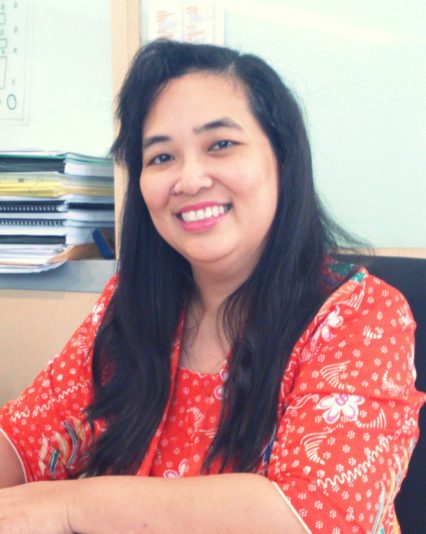Case Document
HOLCIM: OFFERING SOLUTIONS THROUGH MARKETING INNOVATION
This case discusses how Holcim Indonesia differentiates themselves from the stagnant competition in the cement industry by implementing integrated marketing communication. Holcim came out stronger when they launched their “Solusi Rumah” program. The program targeted the low- and middle-income earners in the suburban and rural areas as a continuation of their disaster relief support for the victims of Aceh and Yogya.
The dilemma of the case focuses on what Holcim Indonesia should do in order to continue growing and consistently bringing innovation in the market. The hurdle is that people perceived cement as a commodity product.
KAWASAKI NINJA 250R: HEADING TO SUCCESS THROUGH PRODUCT STRATEGY, BLUE OCEAN AND BRAND LEVERAGING
The case describes about the success of the launching Kawasaki Ninja 250R. It’s a power sports motorcycle. Since its first generation, the Kawasaki Ninja had been known to satisfy the passion for a power sports motorcycle, and the launch of the Ninja 250R was to reaffirm that symbol. With developed technology, it was proof of PT. KMI’s consistency in producing quality products.
There are several things that can be learned from cases of Kawasaki Ninja 250. First, this case illustrates how the Kawasaki Ninja been able to capture market opportunities in motor sport. In this market niche has been no single manufacturer who issued the motor sport with a relatively affordable price. Second, Kawasaki managed to exceed even the products that fit market expectations. Consequently on the third point, Kawasaki successfully applied the blue ocean strategy by releasing a product that resulted in competition becomes irrelevant. From this success, the mother brand benefited as leverage by the Kawasaki Ninja 250.
XL AXIATA: OVERTURNING INDONESIA’S TELCO INDUSTRY
When Hasnul Suhaimi became CEO of XL Axiata in September 2006, he initiated dramatic changes to raise the company’s rank and revenue. After over a decade of XL always ranking third in Indonesia’s cellular provider industry and a market share of less than 15 percent, Suhaimi’s strategy not only influenced the telecom industry to the benefit of consumers all over Indonesia, he also moved XL Axiata to second place and increased its market share to more than 20 percent.
To achieve this, Suhaimi had to change the business strategy from high-price, low-volume to low-price, high-volume. To execute the strategy, he had to change the company culture, as well as its people management practices. The results affected the nation’s telecommunication industry: prices plummeted, competition increased, and consumer spending increased.
The challenge in this case study is to define a strategy in order to sustain in a static market where competition used similar strategies on the same targets.
TURNAROUND RECAPITAL’S WAY CASE STUDY OF PT AETRA AIR JAKARTA
Recapital acquired PT Thames PAM Jaya (TPJ), in year 2007, when the performance of the company experienced a downturn for three consecutive years (2005-2007). Besides, for about 9 years operating in Indonesia, PTJ never reached the target set by Government. However, after Recapital acquired 95% shares, the company experienced a turnaround, where the company’s condition gradually improved and experienced significant growth in over the next 3 years (2008-2010). Recapital made changes to the management of the company ranging from changing the name of the company, until the renewal in human resources, culture, and organizations in it.
Recapital already had a good reputation and well-known expert in revamping companies that were in bad financial conditions. From 2002 to 2008, there were at least 6 companies being acquired and successfully improved by Recapital. This was a strong indicator that explained PT Aetra’s significant growth after the acquisition.
This case study describes the success story of Recapital’s turnaround strategy in PT Aetra, what kind of turnaround strategy they used, how the turnaround strategy could be accepted, and what made this strategy successful.
CARREFOUR INDONESIA: GROWTH VIA ALFA ACQUISITION
To increase market share and strengthen its position as a market leader in modern retailing, PT Carrefour Indonesia acquired a 75% (Rp 647 billion/US$87 million) stake in PT Alfa Retailindo from PT Sigmantara Alfindo and Prime Horizon in January 2008. The acquisition gave the company the right to operate all 29 supermarkets of the AlfaMidi chain, a public company with a market capitalization of about US$ 108 million, had more than 11,000 employees. Following the acquisition, Carrefour renamed the Alfa supermarket outlets to Carrefour and Carrefour Express and generated Rp 9.2 trillion in revenues: Rp 7.2 trillion from Carrefour and Rp 2 trillion from Alfa.
The Indonesia Retailers’ Association (APRINDO-Asosiasi Peritel Indonesia) predicted that Carrefour will dominate the national retail market in Indonesia. About a year after, the Business Competition Supervisory Commission (KPPU-Komisi Pengawas Persaingan Usaha) conducted an initial investigation process of Carrefour's business expansion and in November 2009, KPPU declared that PT Carrefour Indonesia was proven legally and convincingly to have violated Article 17 Paragraph 1 and Article 25 Paragraph 1(a) of Law No. 5/1999 on the prohibition of monopolistic and unfair business competition. KPPU ordered Carrefour to release all the stakes of PT Alfa Retailindo Tbk to parties not affiliated with PT Carrefour Indonesia no later than one year after this decision and to pay a fine of Rp 25 billion.
To challenge this verdict, PT Carrefour Indonesia filed a civil case at the South Jakarta District Court, which decided to cancel all KPPU decisions related to PT Carrefour Indonesia in February 2010. The company was free from the divestment order and fines.
One of the main reasons used by PT Carrefour Indonesia to win in the Court was the definition of retail market and the results of market data researches.
This case provides students an opportunity to discuss and analyze their understanding about economic information in decision-making, market structure systems, and monopolistic issues, as well as to discuss corporate growth strategies. This enables students to be aware of contemporary issues in business restructuring and corporate actions, particularly recent corporate mergers and acquisitions in Indonesia.
The class session would be lively if the instructor uses the debate and open forum format. Role-play would be another method that could be used to discover the assumptions and perspectives of each actor (i.e., KKPU, Carrefour, Alfa and government, competitors, etc).
SPACETOON: SURVIVING IDEAL KIDS PROGRAM IN INDONESIA
SpaceToon Kid’s TV is currently the first and only television station exclusively dedicated to children in Indonesia. The channel is driven by a great concern about the development of children as the future leaders of Indonesia. SpaceToon Kid’s TV exists aims to provide quality shows that are both entertaining and educational. The SpaceToon’s vision is to actively enhance attitudes, morale, skills, and to broaden the knowledge of Indonesian kids by providing selected and quality programs.
In general, children mean big business. Companies that target the children’s market use several mediums to attract children: TV advertising, electronic games, attractive packaging, films and magazines for children. In Indonesia, data from the National Statistics Center show that the 2005 children’ population aged between 0-15 was 83,883,364, with an annual growth rate of about 1.3%. The 2009 Indonesia Kid Market Survey found that children in Indonesia have a daily pocket money average of Rp 5,200. The survey also found that Indonesian children were an influential market demand worth about Rp 200 trillion a year.
However, SpaceToon’s idealistic objectives did not result in big business. SpaceToon could not grab the advantages of the children’s sector Because children’s programs were not cash cows in the television business. Few companies advertise on this type of programs because it is not highly ranked on the Nielsen ratings. High-rank programs include Sinetron (Indonesian soap operas), reality shows, blockbuster movies and other entertainment programs usually aired on prime time (7-10 P.M.). Another reason is that there is intense competition among TV programs for children. In 2008 Nielsen reported that Global TV (GTV), SpaceToon, Rajawali Citra TV Indonesia (RCTI), and ANTV are the top five TV stations in the children’s market, in both 5-14 and 15-19 age brackets.
BANK BTN: TRANSFORMING BUSINESS THROUGH BSC AND IPO
Bank BTN’s Management has initiated to transform the bank into world class financial institution. Two strategic moves have been taken by Bank BTN; which are implementing Balance Score Card (BSC) and going public (IPO). The Bank started to develop BSC on November 2008. A year after that (on November 19, 2009), Bank BTN listed in Bursa Efek Indonesia with IPO’s price of Rp. 800 per share. The IPO has been an accomplishment as the price of Bank BTN’s share has jumped up to Rp. 1.870 per share (October 5, 2010); an increases of 134%. These two strategic business moves are expected to have long term impact to sustainability of the organization as the management aims for becoming world class bank in 2018.
IPO KRAKATAU STEEL
PT Krakatau Steel Tbk, one of the strategic state-owned enterprises, initiated its public offering on 10 November 2010. Only several minutes after its opening, the price rocketed to Rp 1,270 from the initial price of Rp 850. This stopped because of the auto-rejection mechanism on the trading floor. The market capitalization reached Rp 20.03 trillion, the biggest capitalization for the IPO company. The initial price reflected severe underpricing; the price on the black market reached Rp 1,500 compared to the official Rp 850.
The allocation of the stocks was also intriguing because it was suspected that the allocation mostly favored foreign instead of domestic investors. A citizen lawsuit was opened to cancel the Krakatau Steel IPO.
This case study highlights the IPO of Krakatau Steel from the capital structure’s point of view, using EPS and EBIT curve.
PT INDOSAT: PRICING OF BONDS
Early in 2010, the Finance Director of PT Indosat Tbk, considered an empirical investigation of several theoretical pricing restrictions that should be satisfied by nine bonds of PT Indosat TbK. In particular, he wanted to investigate pricing volatility for bonds that were issued in 2002, 2003, 2005, 2007, 2008 and 2009.
Refinancing could be in dollar-denominated bonds, rupiah-denominated bonds, syaria-denominated bonds and bank loans. The market appreciated bonds issued by companies with AA+ Ratings. Comparing current macroeconomic circumstances to inflation and volatile interest rate, newly-issued bonds face challenges such as price, yield, and bond maturity period.
SCHRODER INDONESIA : HOW TO OUTPERFORM THE INDEX
Since 2005, PT. Schroder Investment Management Indonesia was the biggest mutual funds investment company in Indonesia with a total fund of Rp 26 trillion. However, when the crisis happened in the end of 2008, the funds dropped to Rp 20 trillion. Less than a year later, in March 2009, two of Schroder products, Schroder Dana Prestasi Plus (equity mutual funds) and Schroder Dana Prestasi (mixed mutual funds) were chosen as the best mutual funds for category 3 years, 5 years and the latter for 7 years.
The company strived to manage funds to the amount of, Rp 26 trillion in 2005. Moreover, the company aimed to outperform the index, which also meant outperforming the benchmark performance.









